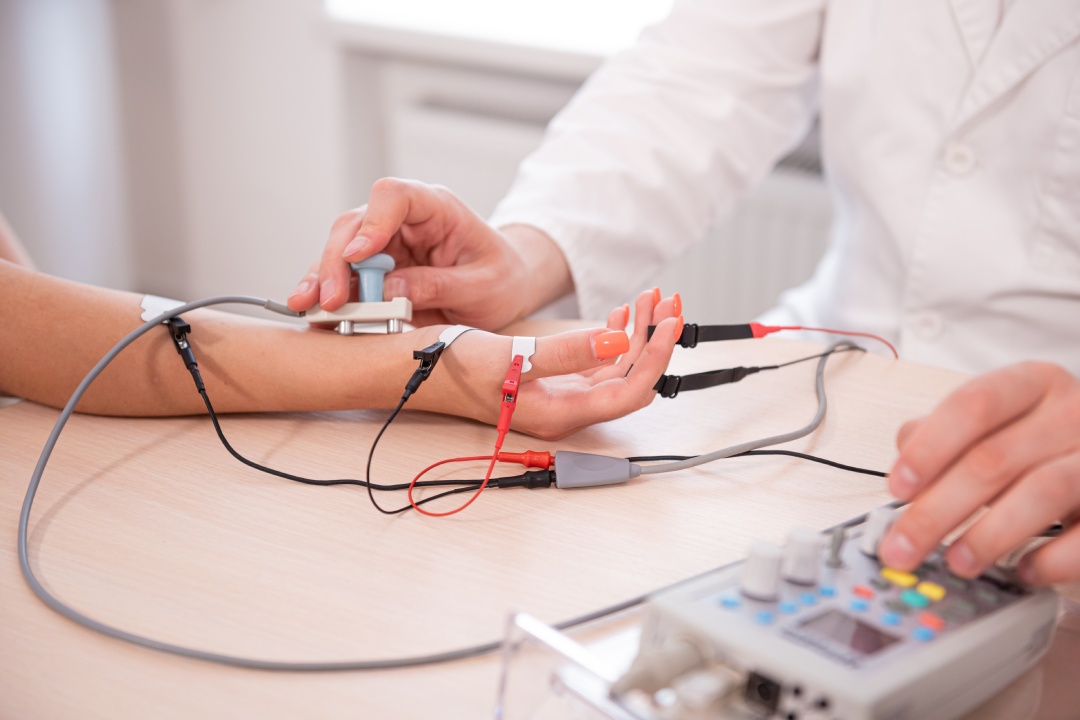Understanding Nerve Pain: Causes and Modern Solutions
Nerve pain is a complex and often debilitating condition that affects millions of people worldwide. Approximately 10% of the population experiences some form of neuropathic pain, making it a widespread issue with significant impacts on quality of life.
Unlike typical pain that results from injury or inflammation, nerve pain arises from damage or dysfunction in the nervous system itself, leading to symptoms that can range from mild tingling to severe, burning discomfort. For many, this type of pain is not just a physical challenge but an emotional and mental one as well, impacting daily life and overall well-being.
In this blog, we’ll explore what nerve pain is, its common causes, and the innovative treatments that are helping patients reclaim their lives.
What Is Nerve Pain?
Nerve pain, medically referred to as neuropathic pain, is a type of pain that occurs when there is damage or dysfunction in the nervous system. Unlike other forms of pain that arise from physical injury or inflammation, nerve pain results from disrupted signals within the nerves themselves. This can lead to unusual sensations, including pain in the absence of an obvious physical cause.
Types of Nerve Pain

Nerve pain can be categorized based on the area of the nervous system affected:
- Peripheral Neuropathic Pain: Originates in the peripheral nerves, which are outside the brain and spinal cord. Examples include carpal tunnel syndrome and postherpetic neuralgia.
- Central Neuropathic Pain: Stems from damage to the brain or spinal cord, such as pain experienced after a stroke or in multiple sclerosis.
- Autonomic Neuropathy: Involves damage to the nerves that control involuntary bodily functions, such as digestion and heart rate.
Common Causes for Nerve Pain
Nerve pain can stem from a wide range of factors, often involving damage to or dysfunction of the nervous system. Identifying the underlying cause is crucial for developing an effective treatment plan. Below are some of the most common causes:
1. Injuries
Trauma or accidents that damage nerves can result in chronic nerve pain. Examples include:
Fractures or Dislocations: These can compress or sever nerves.
Surgical Injuries: Nerves may be inadvertently damaged during operations.
2. Medical Conditions
Certain medical conditions are strongly associated with nerve pain:
Diabetes: Diabetic neuropathy is a prevalent complication of long-term high blood sugar levels, leading to numbness, tingling, and pain, especially in the feet and hands.
Autoimmune Diseases: Conditions like multiple sclerosis and lupus can cause nerve inflammation and damage.
Cancer and Chemotherapy: Tumors may press on nerves, or chemotherapy drugs may cause peripheral neuropathy as a side effect.
3. Infections
Some infections directly affect the nervous system, leading to nerve pain:
Shingles: The reactivation of the chickenpox virus can cause painful rashes and postherpetic neuralgia, a long-lasting nerve pain condition.
HIV/AIDS: This virus can damage nerves, causing burning or stabbing pain, particularly in the limbs.
4. Lifestyle Factors
Everyday habits and conditions may contribute to nerve pain:
Chronic Alcohol Use: Excessive alcohol consumption can lead to nutritional deficiencies and toxic nerve damage, known as alcoholic neuropathy.
Poor Posture or Repetitive Stress Injuries: Prolonged pressure on nerves or repetitive motions can cause issues like carpal tunnel syndrome.
5. Unknown Causes (Idiopathic Nerve Pain)
In some cases, the exact cause of nerve pain remains unidentified, a condition referred to as idiopathic neuropathy. This underscores the complexity of nerve pain and the importance of thorough evaluation.
How Is Nerve Pain Diagnosed?

Identifying the root cause of nerve pain is critical for effective treatment. Consulting a medical professional ensures an accurate diagnosis through a combination of clinical assessment and diagnostic tools.
Nerve pain can mimic other conditions, making self-diagnosis challenging and potentially harmful. A healthcare provider can pinpoint the cause and recommend the most appropriate treatment options.
Diagnostic Tools
Physical Examination: A doctor may evaluate reflexes, muscle strength, and sensory responses to identify affected areas.
Blood Tests: These can detect underlying conditions like diabetes, vitamin deficiencies, or infections that may contribute to nerve pain.
Imaging Tests:
MRI and CT Scans: Used to identify structural issues such as herniated discs or tumors pressing on nerves.
Electromyography (EMG) and Nerve Conduction Studies:
These tests measure electrical activity in muscles and the speed of nerve signal transmission, helping to detect nerve damage or dysfunction.
Modern Solutions for Nerve Pain
Advances in medical science have led to a range of effective treatments for nerve pain. Because of these new cutting-edge therapies, patients now have more options than ever to find relief beyond prescription pain medication. Some of these modern approaches include:
Non-surgical Treatments
For those seeking non-invasive options, several therapeutic techniques can provide significant relief:
Physical Therapy:
Tailored exercises and stretches can improve mobility, reduce nerve compression, and strengthen supporting muscles.
Acupuncture:
This ancient practice involves inserting fine needles into specific points of the body, potentially reducing nerve pain by promoting blood flow and releasing natural painkillers like endorphins.
Massage Therapy:
Regular massage can help relieve muscle tension, improve circulation, and reduce nerve irritation.
Innovative Treatments
Emerging technologies and advanced therapies have expanded the possibilities for treating nerve pain.
Nerve Blocks:
Injections of anesthetic or anti-inflammatory medication around a nerve can provide temporary but significant relief, often used for diagnostic and therapeutic purposes.
Neuromodulation:
TENS Therapy (Transcutaneous Electrical Nerve Stimulation): A device delivers low-voltage electrical currents to the skin to disrupt pain signals and promote relaxation.
Spinal Cord Stimulation: In severe cases, implanted devices can deliver electrical impulses directly to the spinal cord to reduce pain perception.
Regenerative Medicine:
Platelet-Rich Plasma (PRP) Therapy: PRP injections use a patient’s own blood components to promote tissue repair and reduce inflammation, potentially helping to heal damaged nerves.
Stem Cell Therapy: Emerging research shows promise in using stem cells to regenerate damaged nerve tissues, offering a long-term solution for chronic pain.
Get Help For Your Nerve Pain With Altus
Living with nerve pain doesn’t have to be your reality. At Altus Spine & Joint Pain Care, we specialize in advanced, personalized treatments designed to help you find lasting relief and get back to doing what you love. From cutting-edge regenerative therapies to compassionate, patient-centered care, we’re here to guide you every step of the way.
Don’t let nerve pain control your life. Schedule a consultation with our expert team today and discover how Altus Pain can help you feel your best.






